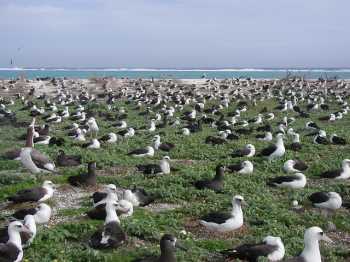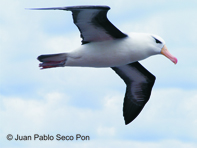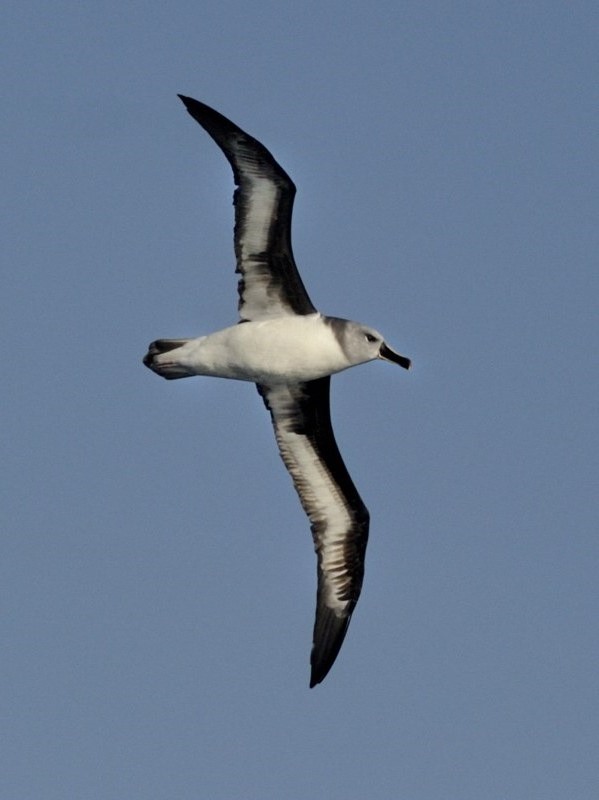Michelle Reynolds (Pacific Island Ecosystems Research Center, Hawai’i National Park, Hawaii, USA) and colleagues have published in the journal Ecology and Evolution on the effects of the Japanese tsunami of March 2011 on Laysan Albatrosses Phoebastria immutabilis and other procellariiforms breeding on atolls within the North-Western Hawaiian Islands (click here).
The paper’s abstract follows:
“Earthquake-generated tsunamis threaten coastal areas and low-lying islands with sudden flooding. Although human hazards and infrastructure damage have been well documented for tsunamis in recent decades, the effects on wildlife communities rarely have been quantified. We describe a tsunami that hit the world's largest remaining tropical seabird rookery and estimate the effects of sudden flooding on 23 bird species nesting on Pacific islands more than 3,800 km from the epicenter. We used global positioning systems, tide gauge data, and satellite imagery to quantify characteristics of the Tōhoku earthquake-generated tsunami (11 March 2011) and its inundation extent across four Hawaiian Islands. We estimated short-term effects of sudden flooding to bird communities using spatially explicit data from Midway Atoll and Laysan Island, Hawai'i. We describe variation in species vulnerability based on breeding phenology, nesting habitat, and life history traits. The tsunami inundated 21%–100% of each island's area at Midway Atoll and Laysan Island. Procellariformes (albatrosses and petrels) chick and egg losses exceeded 258,500 at Midway Atoll while albatross chick losses at Laysan Island exceeded 21,400. The tsunami struck at night and during the peak of nesting for 14 colonial seabird species. Strongly philopatric Procellariformes [sic] were vulnerable to the tsunami. Nonmigratory, endemic, endangered Laysan Teal (Anas laysanensis) were sensitive to ecosystem effects such as habitat changes and carcass-initiated epizootics of avian botulism, and its populations declined approximately 40% on both atolls post-tsunami. Catastrophic flooding of Pacific islands occurs periodically not only from tsunamis, but also from storm surge and rainfall; with sea-level rise, the frequency of sudden flooding events will likely increase. As invasive predators occupy habitat on higher elevation Hawaiian Islands and globally important avian populations are concentrated on low-lying islands, additional conservation strategies may be warranted to increase resilience of island biodiversity encountering tsunamis and rising sea levels.”

Black-footed and Laysan Albatrosses breeding on a low-lying atoll
Reference:
Reynolds, M.H., Berkowitz, P., Klavitter, J.L. & Courtot, K.N. 2017. Lessons from the Tōhoku tsunami: a model for island avifauna conservation prioritization. Ecology and Evolution DOI: 10.1002/ece3.3092.
John Cooper, ACAP Information Officer, 07 July 2017


 English
English  Français
Français  Español
Español 


